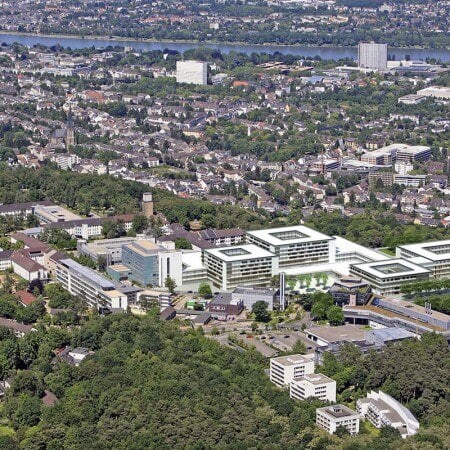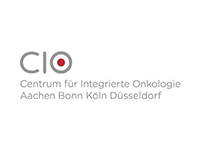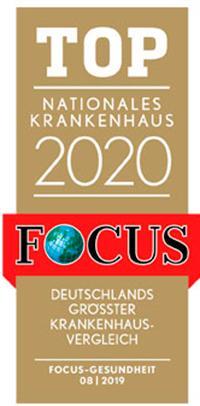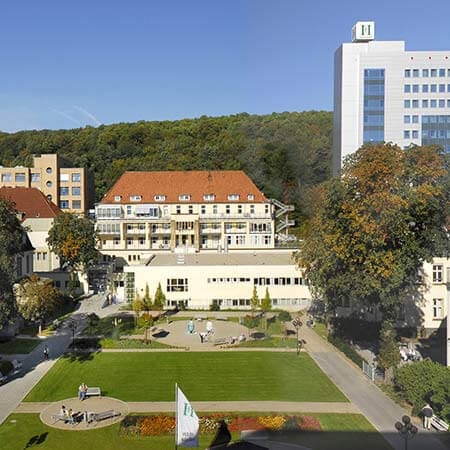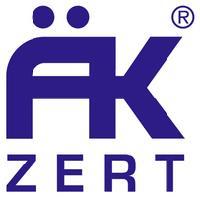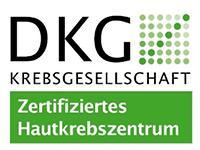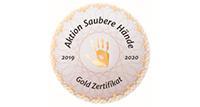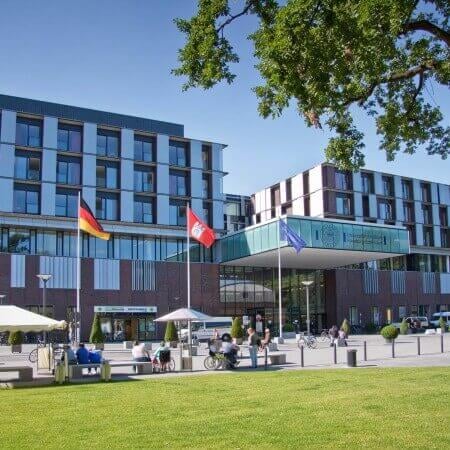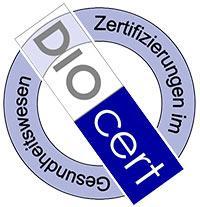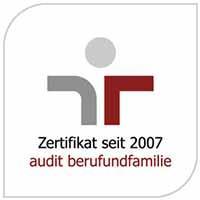Many people want to change or improve the shape of their nose. As a rule, patients are concerned about the shape of the nose, the presence of a hump, or curvature of the nasal septum. These features can be the consequence of trauma, birth defect, or heredity. Besides, changes in the shape of the nose after an injury often disrupt its function.
Content
- Overview
- Causes
- Symptoms
- Types
- Diagnostics
- Treatment
- Where can I undergo treatment of nose deformities?
- The cost of nose deformity treatment
- How can I undergo nose deformity treatment abroad?
Overview
Nose deformities occur when there is a disturbance in the growth of the nasal septum and its bone frame. The growth of the septum sometimes outstrips slightly the growth of the facial skeleton.
In adults, most often there is a curvature or deviation from the midline of the nasal septum to one degree or another, which usually does not interfere with nasal breathing and therefore does not require treatment.
Although, some nose deformities narrow the nasal passages and thus make it difficult to breathe. Sometimes a significant curvature does not hinder nasal breathing and air passes freely above or below the curvature, but, on the opposite side, a slight curvature of the nasal septum at the entrance to the nose, can disrupt nasal breathing sharply.
Therefore, the main complaint of patients with nose deformities is a disruption of nasal breathing. However, in some cases, there is a headache, pain in the ear, dry throat, etc.
The diagnosis of nose deformities is established based on the rhinoscopy examination method.
Treatment of nose deformities is surgical. Indications for surgery include difficulty in nasal breathing through one or both halves of the nose, pathological changes caused by the curvature of the septum, such as chronic inflammation of the nasal mucosa, headache, sinusitis (infection), etc.
One of the most common types of nose deformities is a saddle nose deformity – when the nasal bridge is not straight but has a notch.
Causes
The causes of nose deformities, including saddle nose deformity, are as follows.
Physiological. When nose deformities occur due to uneven development of the bones of the skull.
Traumatic. These are the most common causes of the development of a saddle nose deformity. Sometimes a minor trauma of the nose can lead to severe saddle nose deformity.
Pathological. The nose deformities occur due to the presence of other pathologies in the nasal cavity. These pathologies include an overgrown turbinate (a large turbinate presses on the nasal septum, causing it to shift in one direction or another), polyps, various growths in the nasal cavity, constant congestion in the nostrils (trying to breathe through only one nostril puts a lot of stress on the nasal septum).
Symptoms
Nose deformities can have both external and internal effects on the human body. They are usually manifested by the following symptoms:
- Persistent nasal congestion. One of the most common complaints in people with a saddle nose deformity. A person has constant breathing difficulties.
- Chronic inflammation in the nasal cavity.
- Snoring.
- Dryness in the nasal cavity, discomfort during breathing.
- Allergic diseases. Violation of nasal breathing facilitates the appearance of allergic processes in the body.
- Changes in the shape of the nose. With the traumatic curvature of the nasal septum, the shape of the nose changes occur. One of the most common cases is saddle nose deformity.
- Changes in smells perception. The olfactory zone is at the top of the nasal passages. If the upper part of the nasal septum is curved, the patient may have trouble smelling.
- Nose bleeding. Nose bleeding is a result of the irritation of the nasal mucosa. In the place where the nasal septum is more convex, the mucous membrane becomes very thin. Therefore, even a small impact can lead to bleeding.
- Frequent fatigue and decreased physical activity. These symptoms occur due to disturbances in nasal breathing, and specifically due to insufficient amount of oxygen entering the bloodstream.
- Constant inflammation in the throat.
- Otitis.
Types
Nose deformities can be of several types:
- Deviated septum. In deviated septum, the cartilage that divides the nostrils (nasal septum) is bent to one side.
- Enlarged adenoids. Adenoids are the lymph glands located at the back of the nose. With enlarged adenoids, blocking the airways can occur.
- Swollen turbinates. The turbinates are located on the side of each nostril and help to clean and humidify inhaled air. When swollen, they hamper breathing.
- Saddle nose deformity. With saddle nose deformity there is a depression in part of the nasal bridge. Trauma, certain diseases, and cocaine abuse can cause saddle nose deformity.
- Nasal hump. A hump in the nose is relatively common and is usually formed by excess bone or cartilage, depending on where on the nose it occurs. Almost all people have a slight curvature that usually does not affect breathing.
With severe disturbance of nasal breathing, an insufficient amount of oxygen enters the blood and brain, which leads to a decrease in immunity, brain function, and a thinning of the walls of blood vessels. The curvature of the septum causes persistent inflammation in the sinuses.
Over time, these symptoms become chronic and manifest as:
- Chronic sinusitis
- Development of allergic rhinitis
- Smell impairment
- The formation of polyps in the nose
- Hearing impairment
Diagnostics
The first step towards the correct diagnosis of nose deformities is an examination by an ENT doctor. The appearance of the patient's nose is assessed. With large nose deformities, the curvature of the septum is noticeable immediately at first examination. The patient's nasal breathing is then assessed. The sense of smell is also tested.
For the confirmation of the diagnosis, the doctor may prescribe other studies.
Rhinoscopy is an examination of the nasal cavity with a special instrument that dilates the nostrils. Next, a thin probe is inserted into the enlarged nasal passage, which checks the presence of any formations or growths in the mucous membrane.
Endoscopy provides more accurate and detailed examination results. It is performed under general anesthesia. The mucous membrane of the nasal cavity is assessed using a probe, at the end of which there is a video camera, which records all the data from the inside. The endoscopic examination method allows a more detailed view of the lower part of the nasal cavity, in which mucus collects most often.
X-ray of the skull allows excluding the presence of formations in the nasal sinuses, detecting nose deformities that have appeared as a result of trauma, excluding congenital curvature of the skull that could lead to deformation of the nasal septum.
Computed tomography allows examining the posterior wall of the nasal cavity and excluding damages of the septum.
Treatment
Nose deformities are common pathology. Depending on the complexity of the existing deviation from the normal position, various complications arise that lead to the subsequent development of diseases. The treatment of nose deformities is possible with surgery. A surgery of this kind refers to plastic surgery.
Surgical treatment of various forms of nose deformities, including those combined with other diseases and pathological conditions of the nasal cavity, is a priority area in plastic surgery. For the high-quality and safe performance of these types of surgery, the most modern equipment is used, which significantly minimizes the risk of intraoperative complications development.
Surgery to correct a deviated nasal septum is very often performed in ENT departments and helps patients solve many health problems.
The difficulty in correcting saddle nose deformity is that this defect can be presented in a wide number of variations, simultaneously affecting the cartilaginous and bone parts of the nose. There are three stages or degrees of saddle nose deformity:
- Saddle nose deformity is characterized by a sunken dip in the bridge with an even tip of the nose
- There is a noticeable deformation, where the end part of the nose is lifted
- In severe saddle nose deformity, the bone structures are affected, the contour becomes uneven
Rhinoplasty of the back of the nose will help to get rid of saddle nose deformity. Correction of the saddle nose deformity is carried out in an open way, which allows the plastic surgeon to see all affected areas during the manipulation.
The surgery is performed under local anesthesia, with the introduction of antibacterial drugs that prevent the development of the inflammatory process. The convex structure of the back is restored with the help of implants. They are softened, remodeled, and applied to create the correct contour.
The choice of one or another type of implantable materials when conducting the saddle nose deformity treatment depends on many factors and is made on an individual basis. This issue is necessarily discussed with patients during the preoperative consultation.
If the saddle nose deformity is mild, then non-surgical rhinoplasty with fillers may be performed. Doctors perform injections of certified drugs that have passed numerous clinical trials are well tolerated by patients of any age. The procedure does not require rehabilitation, and since there is no edema, the result of this saddle nose deformity treatment is noticeable immediately.
It is recommended that after treatment of saddle nose deformity patients refrain from eating solid food while wearing the bandage. Swelling and bruising will go away completely by the end of the second week. The month after treatment of saddle nose deformity, it is recommended to refrain from physical activity, visiting baths, solariums, and swimming pools.
You can protect yourself from nose deformities if you:
- Avoid activities that can lead to nasal trauma
- Start the preventive treatment of ENT diseases before any complications arise
- Support the immune system
Where can I undergo treatment of nose deformities?
Medical tourism is becoming more and more popular these days, as treatment abroad ensures a much better quality of nose deformities treatment.
The best success rates in the treatment of nose deformities demonstrate:
- PAN Clinic Cologne, Germany
- University Hospital of Ludwig Maximilian University of Munich, Germany
- Tel Aviv Sourasky Medical Center, Israel
- Hanyang University Medical Center Seoul, South Korea
- University Hospital Erlangen, Germany
You can check out the full list of hospitals on the Booking Health website.
The cost of nose deformity treatment
The prices in hospitals listed on the Booking Health website are relatively low. With Booking Health, you can undergo treatment abroad in the best hospitals in the world at an affordable price.
The cost of nose deformity treatment varies, as the prices depend on the hospital, the chosen type of treatment, and its complexity.
The cost of nose deformity treatment in Germany is 7,140-11,428 EUR.
The cost of nose deformity treatment in Israel is 4,000-5,800 EUR.
The cost of nose deformity treatment in South Korea is approximately 4,000 EUR.
You also need to consider the cost of additional corrective procedures and follow-up care. Therefore, the ultimate cost of nose deformity treatment may differ from the initial price.
To make sure that the cost of nose deformity treatment is suitable for you, contact us by leaving the request on the Booking Health website.
How can I undergo nose deformity treatment abroad?
It is not easy to self-organize any treatment abroad. It requires certain knowledge and experience. Thus, it is safer, easier, and less stressful to shift some responsibility onto a medical tourism agency.
As the largest and most transparent medical tourism agency in the world, Booking Health has up-to-date information on nose deformity treatment. It is vital to have accurate information on the success rates of the specific hospital in plastic surgery.
Booking Health will help you select a hospital, taking into account your wishes for treatment. Our goal is to find the best medical facility for you, where you can safely undergo nose deformity treatment.
We want to help you and take on all the troubles. You can be free of unnecessary stress, while Booking Health takes care of all organizational issues.
Medical tourism can be easy! All you need to do is to leave a request on the Booking Health website, and our manager will contact you shortly.
Authors: Dr. Vadim Zhiliuk, Dr. Sergey Pashchenko
